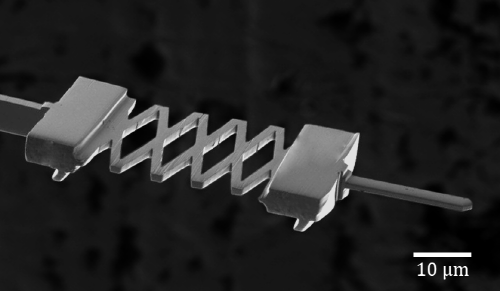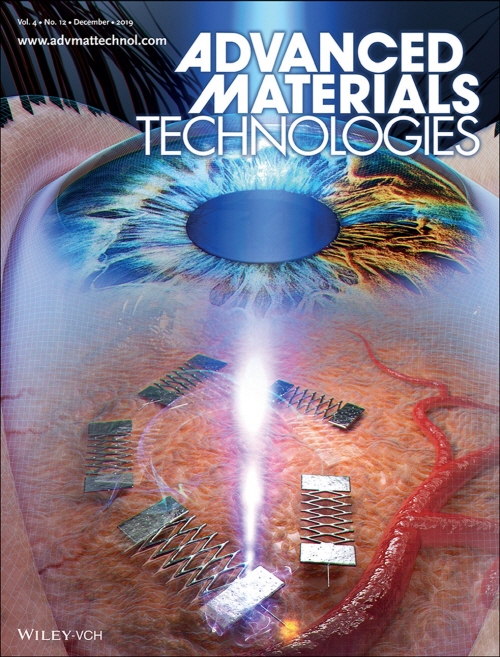Department News
Prof. Sung-Hoon Ahn’s Research Team Develops Cell-sized Microrobots Driven by Light
December 11th, Seoul National University College of Engineering announced that Professor Sung-Hoon Ahn of Dept. of Mechanical and Aerospace Engineering and his research team developed cell-sized microrobots that are driven by light.
The robot (Image 1) is 65 μm long, with a width of 25 μm and a height of 8 μm. It was created by processing nickel-titanium shape memory alloy with focused ion beam. It consists of an actuator that moves sideways along the robot’s width, legs, and microneedles. The robot is of a similar size to a human somatic cell. Using the energy from the laser, it can move in a straight line at a maximum speed of 10 μm/s, and in curved motions at a minimum radius of 5 μm.
When the robot receives light from the laser, it moves by shape memory effect and optothermal trapping effect. Optothermal trapping is a phenomenon in which light energy is absorbed by an object and transforms into heat energy, in turn generating force due to temperature differences around the object. Unlike optical tweezers, which received the Nobel Prize in Physics in 2018, this method can operate on opaque, microscale objects.
Dr. Min-Soo Kim (Soft Robotics Research Center at Seoul National University), lead author of the study, explained that “the robot we developed is solely made of shape memory alloy, a biocompatible material, unlike previous robots. Also, we can control the robot relatively easily using laser scanning.”
Prof. Sung-Hoon Ahn, corresponding author, said that “normally robots need power supplies or electronic circuits to move. But we successfully developed a robot that is made of shape memory alloy, operated by light energy. As a follow-up study, we are searching for the necessary conditions for the robot to operate in an environment like the inside of a human body. We hope this technology can be utilized in bioscience to cure illness or differentiate between cells.”
The research was published on the cover of Advanced Materials Technologies December issue. It was supported by the Korean Research Foundation and the Agency for Defense Department.

Image 1. Microrobot made of shape memory alloy (Before robot is separated from parent material)

Image 2. Possible usages of shape memory alloy microrobot
(Cover of Advanced Materials Technologies, December issue)

